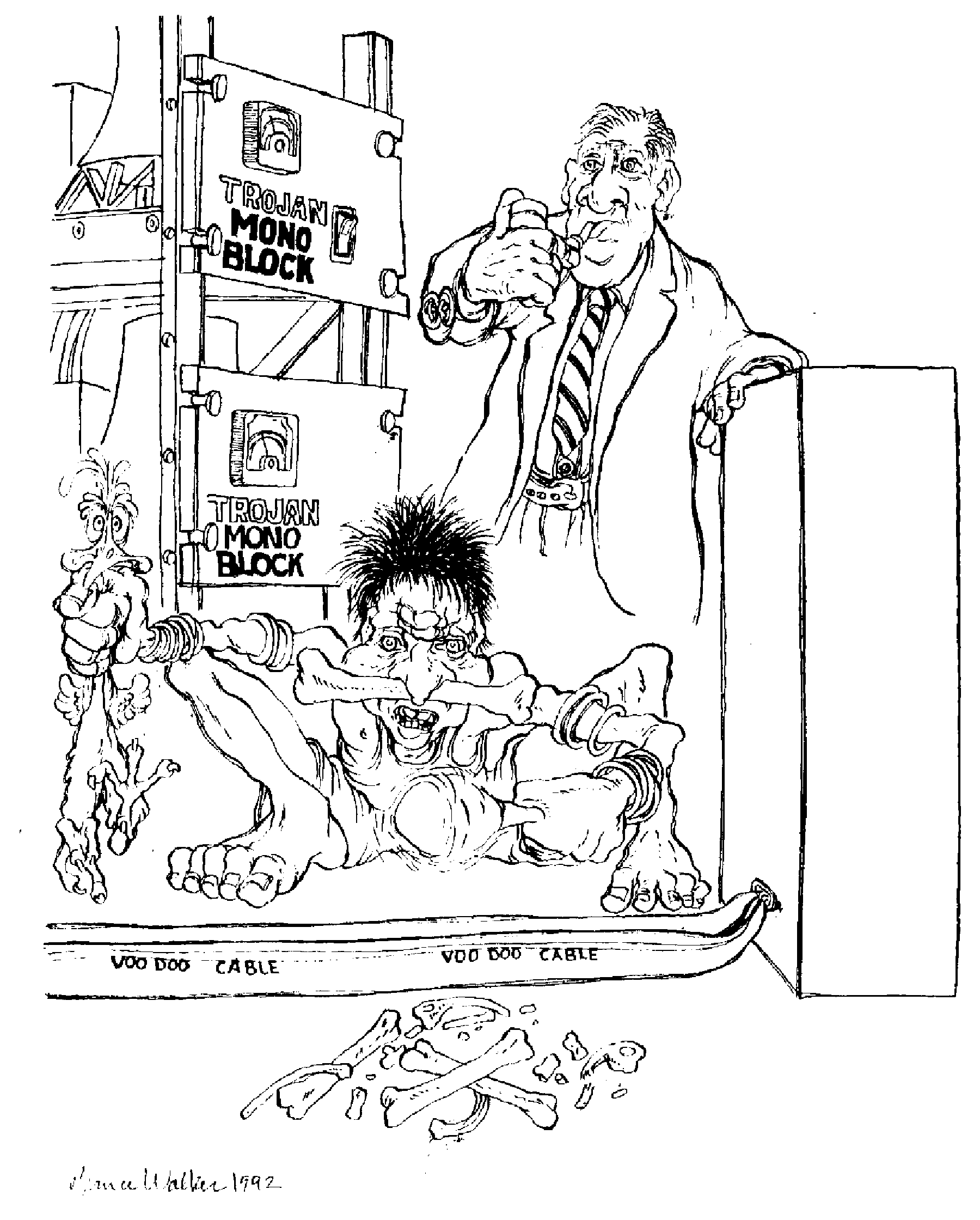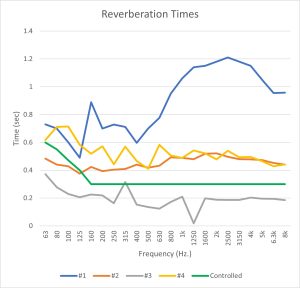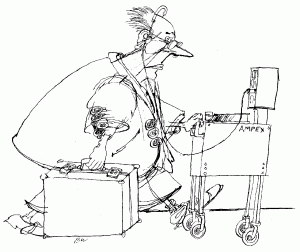Roger Skoff tells how to increase your enjoyment and get better sound out of your system.

Chip Moore and Roger Skoff at the LAOC Audio Society Gala, 2019 (photograph and image processing by David W. Robinson)
Do you know the difference between hearing and listening? Both involve the same sounds, from the same sources; both use the same physical tools of perception (our ear/brain system); and both can communicate information, affect our mood, or inspire us to action. The difference lies not in the sounds transmitted or perceived, but in the way we approach and receive them.
Movie music might be the best way to show what I mean: In the typical movie-music situation, something's happening to the characters on the screen. They might be robbing a bank, engaged in a car chase, doing something sexy, doing something scary, or even doing something spiritually uplifting. Whatever it is, it's a "Tell me a story" situation, and the music is there to support the story: to involve you emotionally, to scare the crap out of you, or, in whatever way, to draw you into the action. It's not there to be a thing in itself, though, and you're not supposed to actually listen to it.
The first time I noticed this was with the soundtrack for the James Caan movie, Thief, (Tangerine Dream, 1981). In the theater, watching the movie, it so thoroughly dragged me into the action and held me there that, straight from the film, I went to Tower Records and bought the LP. When I got it home and put it onto the turntable, though, I was amazed to find that, on its own, without the visuals to integrate with it, it had little of the impact that it had had as a part of the movie.
In short, that soundtrack album was hearing music, not listening music. I just hadn't noticed it before because my attention was taken-up—as the Director no doubt intended—by the movie, and, in the theater, I hadn't really listened to the music at all!
A problem that many of us have is that we're constantly deluged with music—not just when we set out to listen to it but, as "bumper" music on news broadcasts; as the background to advertising jingles; in elevators; in stores; and just about everywhere else. The result is that we're used to hearing without actually listening, and, unfortunately, all too often we carry that same attitude into our Listening Rooms at home or our trips to the HiFi shop, and either miss out on much of the joy of what we already have or on what improvements new gear might have to offer.
Certainly listening to music can, just like a movie, be a "Tell me a story" experience that you can just relax to and let your system do all the work, but it can also be vastly more fulfilling. All you need to do is to participate, and actively listen.
Where was the music you're listening to recorded? Was it a big room? A small room? Open air, like a stadium or Woodstock? A jazz club or a concert hall? Can you hear the size of the room? If your music was performed by an orchestra, how many instruments were playing? How were they arranged? In how many rows? Spaced how far apart? If there were lots of violins (or trumpets or whatever), can you hear them separately? Or do they all sound like just one BIG one?
On a good system, properly set up, in a good listening room and with a good recording, you should be able—if you listen—to hear all of these things. Even if the recording was, as so many are today, recorded in multiple takes, on multiple tracks; maybe even in multiple venues, and was mixed-down to make a "master" with never any actual "original recording session," many should still be audible. (On one system owned by a friend, we listened to a record that had a female vocalist singing in an isolation booth, and we could actually hear the different acoustical environments for the singer and the band. They were there, but we had to listen for them!)
Different people naturally listen for different things. For me, imaging and soundstaging are what float my boat, but other people listen for – just to name a few of the possibilities—dynamics (Does the kick-drum really kick? How much difference is there between the very loudest sound played and the very quietest?); harmonic richness; transient attack and decay (Does a "rim shot" on a drum sound like a "whack", or a "thud"?); definition (Can you count the instruments? Do you hear the "edges"—where one instrument's spatial presence stops and another comes into dominant focus? Are the performers and instruments the right size?), timbre (If a clarinet and an oboe both play the same tone, can you tell which instrument is which?), "air" (the sound of the space around and between the instruments), and any number of other things.
These are all great and make for good fun when you hear them, but if you're just focused on one or two things, it might cause you to miss other things equally exciting and never even notice a good part of the music or of the excellence of the sound system you're listening to.
Knowing how an instrument makes its sound is a good way to start to learn what to listen for. For example, when a jazz musician plucks the strings of a string bass (a bass viol), three distinct sounds are produced. First there's the pluck of the string, then the "pluck" extends along the full string; then the vibration of the string passes through the instrument's bridge and sets the whole wooden body of the instrument vibrating: "Pluck," "Spread," "Body sound." Can you hear all three? Bowed string instruments (even the bass, when it's bowed) make sound because the part of the bow that's pulled across the strings is made of horsehair, which has thousands of tiny barbs on it, and all of them grab and release the string thousands of times as the bow is moved, and that creates the vibration that makes the sound of the instrument. Can you hear the barbs on the bow? You should be able to. Brass instruments make their sound because the player does a "raspberry" with his lips into a mouthpiece to produce each tone, and the long length of flaring brass tube and the column of air inside it resonate and amplify that to make the sound. A pipe organ is actually not just one instrument, but as many as thousands of whistles of wildly varying sizes which fill with air and resonate to make the sound. Can you hear the "fill" sound? Can you hear the "action" of the mechanism that operates them? On older instruments, sometimes it's possible.
On a good recording on a good system in a good room, all of those things are there and, if you listen, you can hear them. Not only can that give you more enjoyment of the music, but, by skillful and committed active listening, you can better know which component to buy when you're at the dealer's, or you can—by listening for them and changing things on the system you already have (switching cables or components, moving your speakers around until they're "just right," or treating the acoustics of your room to improve its "sound")—you can actually come up with a better system and a better listening experience every time you put on a disc or make a selection from your streaming device.
Make listening a skill and then master it! From a musical standpoint; from a sonic standpoint; for just more sheer enjoyment and satisfaction from the time you spend listening, you'll be glad you did.







































